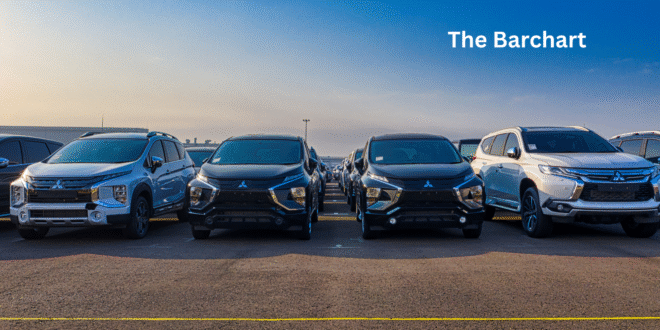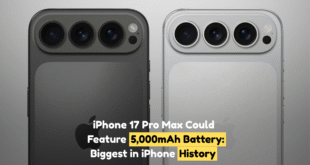Navigating the used car market in 2025 requires awareness of rising prices, limited inventory, and shifting buyer trends.
With more consumers turning to pre-owned vehicles, demand is high.
Smart buyers should research thoroughly, inspect vehicles carefully, and watch for scams.
Staying informed is key to avoiding costly mistakes this year.
What Is Driving the Surge in the Used Car Market in 2025?

In 2025, several factors are fueling the surge in the used car market.
First and foremost is affordability.
With new car prices reaching record highs due to rising manufacturing costs and interest rates, more consumers are turning to used vehicles as a cost-effective alternative.
Supply chain issues, particularly in semiconductor production, have also slowed down new car production, pushing buyers toward pre-owned options.
Additionally, more people are seeking vehicles for remote work, gig jobs, and flexible travel.
This increased demand has created a competitive atmosphere, driving up the prices and value of used cars.
The rise of online car marketplaces and buyer tools has also made used car shopping easier and more transparent.
As buyers look for value and reliability, the used car market continues to gain momentum, drawing attention from industry analysts and consumers alike as a resilient and dynamic segment of the automotive world.
How the Global Economy Is Affecting Used Car Prices
The global economy plays a significant role in shaping used car prices, and 2025 is no exception.
High inflation rates, fluctuating interest rates, and uncertain consumer confidence have led to changes in buyer behavior.
As the cost of borrowing rises, consumers become more budget-conscious, increasing demand for pre-owned vehicles.
Meanwhile, rising fuel prices have pushed buyers to seek more fuel-efficient used cars, driving up prices in specific segments.
Additionally, international trade disruptions and currency fluctuations have affected both the import and export of vehicles, creating regional pricing disparities.
As new vehicle production struggles to meet demand, resale values remain unusually high.
The used car market has become a key indicator of economic stress and resilience, showing how consumer spending adapts in uncertain times.
With economic uncertainty lingering globally, buyers and sellers must stay informed to navigate this shifting landscape effectively and make smarter financial decisions when entering the used car market.
New vs. Used: Why More Buyers Are Choosing Pre-Owned Vehicles
In 2025, the gap between new and used vehicles will widen, not just in terms of cost, but also in buyer preference.
New cars come with steep price tags, longer loan terms, and higher depreciation.
Conversely, used cars offer more value for money, with many vehicles retaining excellent condition, safety features, and warranties.
Consumers are increasingly aware of depreciation—where a new car can lose 20–30% of its value in the first year alone.
Pre-owned cars, especially those that are certified, give buyers confidence while offering better deals.
Another driving factor is availability.
Some buyers can’t wait months for a new car due to supply chain delays and are turning to used inventory for quicker access.
Environmental consciousness also plays a role—buying used reduces the carbon footprint compared to manufacturing new vehicles.
Overall, the shift toward pre-owned options continues to reshape the used car market as a preferred choice for practical buyers.
Top Tips for Buying a Used Car Without Getting Ripped Off
Buying a used car can be a smart decision—if done right.
Start by setting a clear budget that includes potential repairs, insurance, and taxes. Research the car’s market value using trusted sources like Kelley Blue Book or Edmunds to avoid overpaying.
Always request a vehicle history report to check for accidents, title issues, or previous damage.
If possible, have a trusted mechanic inspect the car before you buy.
Don’t skip the test drive—listen for unusual noises, test the brakes, and assess overall comfort.
Watch out for overly pushy sellers or “too good to be true” deals.
Be cautious of flood-damaged cars or tampered odometers.
Finally, ensure all paperwork is in order, especially the title and bill of sale. The used car market can offer great deals, but due diligence is essential.
By staying informed and cautious, you can drive away with confidence and avoid costly mistakes down the road.
Certified Pre-Owned vs. Private Seller: Which Is Better?

Choosing between a certified pre-owned (CPO) vehicle and buying from a private seller depends on your priorities.
CPO cars are inspected, refurbished, and backed by the manufacturer with warranties—ideal for peace of mind.
They usually come with a slightly higher price but offer security, reliability, and often additional perks like roadside assistance.
On the other hand, buying from a private seller can save you money upfront, and negotiation is often more flexible.
However, it comes with more risk—no warranty, less legal protection, and potentially hidden issues. You’ll need to conduct your own inspection and history check.
Private sales are better suited to buyers with automotive knowledge or those working with a trusted mechanic.
Ultimately, the better choice depends on your risk tolerance, budget, and comfort with doing your own vetting.
In today’s used car market, both options have a place, but CPO vehicles provide more assurance for the average buyer.
How Vehicle History Reports Can Save You Thousands
A vehicle history report is one of the most critical tools when buying a used car.
These reports provide essential details like accident history, previous owners, odometer readings, title status, and service records.
Skipping this step can result in unexpected costs and safety concerns.
For example, you might unknowingly buy a flood-damaged car that appears fine on the surface but has hidden electrical problems.
Or worse, a car with a “salvage” title that lowers resale value and voids some insurance coverage.
Services like Carfax and AutoCheck make it easy to access this data with just the VIN number.
While the report doesn’t replace a mechanic’s inspection, it offers a layer of protection that can save you thousands in repair or legal issues.
In a fast-paced used car market, where deals move quickly, having a detailed history report helps you make confident, informed decisions—and avoid falling into costly traps.
Financing a Used Car in 2025: What to Know Before You Borrow
Financing a used car in 2025 can be trickier than it seems.
Interest rates remain high, and loan terms are often shorter than those for new vehicles, which means higher monthly payments.
Buyers must first check their credit score—this determines your loan eligibility and rate.
Next, compare lenders: banks, credit unions, and online financing options often offer better terms than dealer financing.
Pre-approval can strengthen your negotiating power at the dealership.
Be cautious of long-term loans, which may cost more in interest over time.
Also, consider the vehicle’s age—older cars may have loan restrictions or higher rates.
Check if GAP insurance is necessary, especially if your down payment is small.
Remember, the goal is to avoid being “upside down,” where you owe more than the car’s worth.
With the evolving used car market, informed financing ensures your investment stays affordable and manageable long after you’ve driven off the lot.
The Role of Online Platforms in Reshaping the Used Car Market
Online platforms like Carvana, Vroom, and Facebook Marketplace have transformed the way people buy and sell used cars.
These digital spaces offer wider inventory, better price comparisons, and the convenience of shopping from home.
Many platforms now include detailed listings, financing tools, vehicle history reports, and even return policies.
This tech-driven model eliminates the pressure of in-person negotiation and allows buyers to take their time.
Sellers also benefit by reaching more potential buyers beyond their local area.
However, it’s still important to remain cautious—scams, hidden issues, and unrealistic prices can still be present online.
Always verify details, check reviews, and avoid deals that feel rushed or unclear.
The used car market has expanded thanks to these platforms, making it more accessible and transparent.
As technology continues to evolve, online marketplaces will remain a dominant force in how consumers interact with and navigate the modern used car buying experience.
Common Pitfalls to Avoid in the Used Car Buying Process
Buying a used car without careful planning can lead to expensive regrets.
One major pitfall is skipping the vehicle history report or inspection—two steps that can reveal hidden issues.
Many buyers also fail to set a realistic budget, forgetting to account for insurance, taxes, and maintenance.
Emotional decisions can cloud judgment; avoid falling in love with a car before doing your research.
Another common mistake is not test-driving the vehicle long enough or under different conditions.
Buyers sometimes trust the seller’s word without verifying the paperwork, including title status and VIN matching.
Beware of cars priced far below market value—it could indicate hidden problems or even fraud.
Lastly, rushing the process can cause you to overlook better deals.
The used car market offers great opportunities, but patience, research, and attention to detail are key.
Avoiding these pitfalls helps ensure your purchase is safe, sound, and a smart financial move.
Is the Used Car Market Still a Smart Investment in 2025?

Yes, the used car market remains a smart investment in 2025—but with caveats.
While prices have risen due to demand and inflation, many buyers still find used vehicles more economical than new ones.
Depreciation rates are slower, and supply chain issues continue to affect new car availability.
Smart buyers who research thoroughly, inspect vehicles carefully, and negotiate fairly can still find excellent value in the pre-owned space.
Additionally, rising awareness of maintenance history, reliability ratings, and long-term durability has helped consumers make more confident choices.
However, it’s crucial to remain cautious: overpaying or buying a poorly maintained car can turn a good deal into a costly mistake.
As more online tools and certified programs become available, buying used is easier and safer than ever.
The used car market continues to adapt to economic shifts, and for buyers who do their homework, it remains a reliable and financially sound choice.
❓ FAQs – Used Car Market in 2025
Q1. Why are used car prices still high in 2025?
Used car prices remain elevated due to limited new car production, high demand, and inflation-related cost increases across the automotive industry.
Q2. Is it better to buy a used car or lease a new one in 2025?
Buying a used car can offer better long-term value, especially if you choose a well-maintained vehicle. Leasing may provide lower monthly payments but offers no ownership.
Q3. What are the safest ways to buy a used car online?
Use reputable platforms, request a vehicle history report, and avoid sellers who pressure you. Always verify documents and arrange a third-party inspection if possible.




